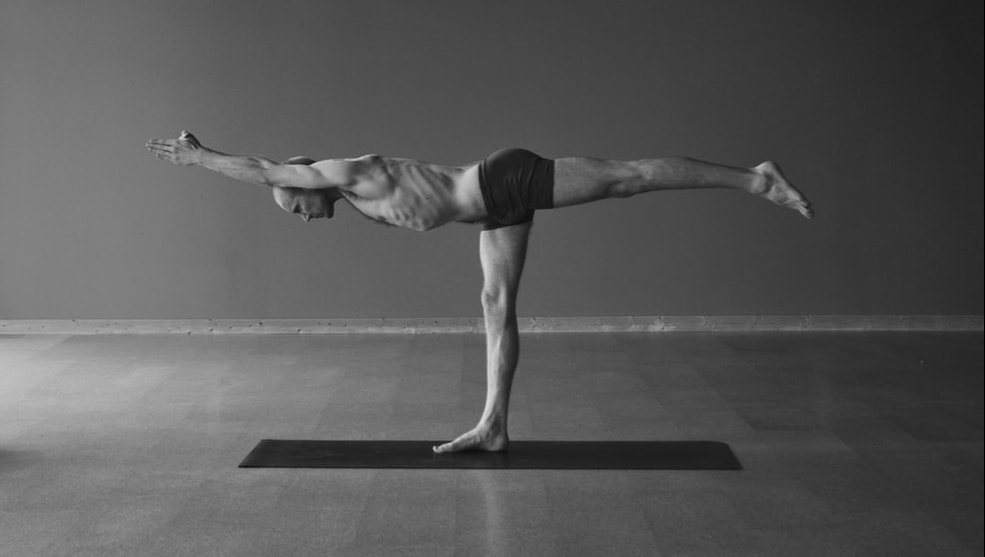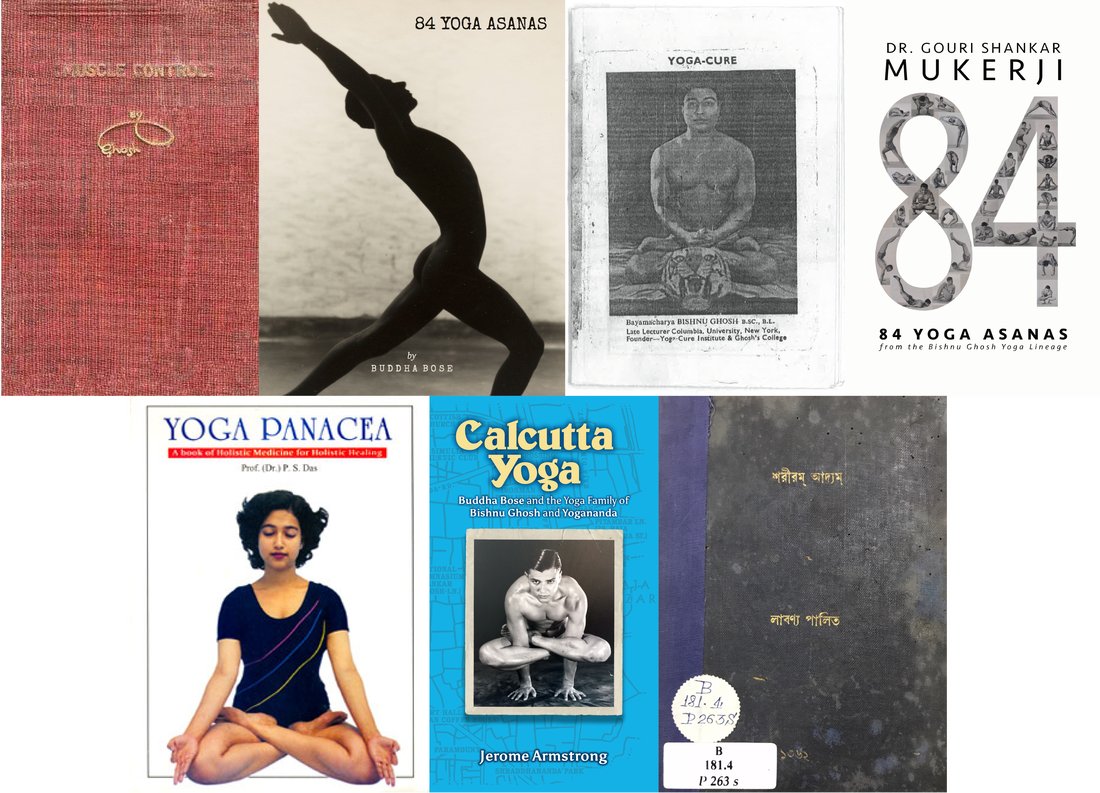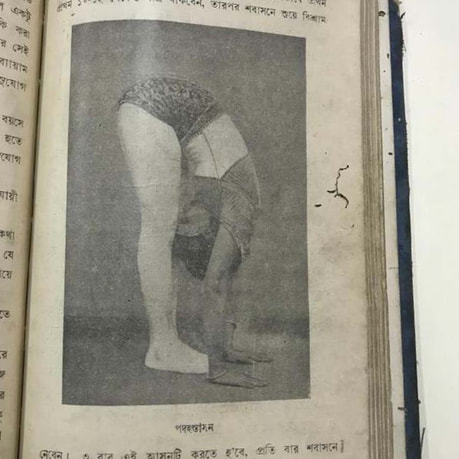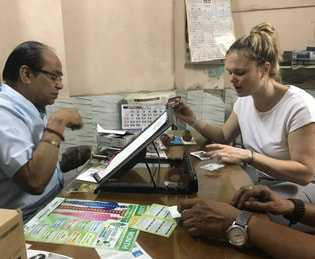|
Why do we, as yogis, practice physical postures?
Depending on your goals, there may be a handful of answers to this important question. The exercises may increase your flexibility, increasing your ability to move the body without pain or limitation. They may help you relax, spending a little time each day focused only on your breathing and forgetting about your stress. They may help your balance, strength, blood pressure or sleep. At the center of all these motives is the spine, perhaps the single most important communication pathway of our body and mind. We can live without our arms and legs, but we cannot live without our spine. It provides structure, protection and support for our heart, lungs, organs and head. Almost every signal sent from around the body, from the fingers to the toes, makes its way to the central nervous system by way of the spinal cord. And almost every command about balance, movement or breath also travels via the spine. So every exercise, whether of the feet, arms, hips or abs is also an exercise of the spine. Even breathing exercises and meditation require communication through the spinal cord as we control our ribs, abdomen and posture. Paramhansa Yogananda called the spinal cord a "lightning rod for the divine." Our practices should contain plenty of attention to the health and function of the spinal column (the structural part) and cord (the nervous system part). We should keep the muscles of the spine strong and mobile, as well as doing what we can to protect the bones and discs strong; plenty of forward bending, backward bending and twisting. And we should also keep our awareness on the communicative aspects of the spine: its nerves. As one of our teachers said: "The arms and legs assist the posture. Every posture is in the spine."
0 Comments
History is never done being written. That much is clear as we discover new characters, beliefs and links that were unknown in years past. Our knowledge is always being updated and the story of history is always changing.
It is shocking how much is unknown about our past. Where does our knowledge come from? Where did our teachers learn? When and why did practices begin and evolve? We are passionate about finding the answers to these questions, which is why we have published and made available seven volumes in the past four years. MUSCLE CONTROL by BISHNU CHARAN GHOSH Originally published in 1930 as part of Muscle Control and Barbell Exercise, this is the first book by BC Ghosh. It doesn't deal with yogic values or practices, but its emphasis on muscular development and technique has trickled down through the decades into modern yoga practice. It has been available around the web before as a sort of bootleg, but the Ghosh family recently approved it for sale. Its proceeds go to Ghosh's Yoga College in Kolkata. 84 YOGA ASANAS by BUDDHA BOSE The manuscript of this volume was created in 1938, and a small section of 24 postures was published in 1939 as "Key To the Kingdom of Health Through Yoga, Volume 1." The rest was never published, lost to history through a fascinating series of events including a World War, an estate sale and an art exhibition. It was discovered by Jerome Armstrong in 2015 and published, shining a bright and powerful light into the yoga practices of the 1930s. YOGA CURE by BISHNU CHARAN GHOSH This is the only surviving yoga text we have from BC Ghosh. It is a small pamphlet that he wrote in 1961 in Bengali and English containing 32 postures and instructions. The photos are of his daughter Karuna. The pamphlet was recently discovered by a student (thanks Mukul!) of Ghosh, and the family approved it for sale. Proceeds go to Ghosh's Yoga College in Kolkata. 84 YOGA ASANAS by Dr. GOURI SHANKAR MUKERJI Based on an out-of-print German volume and unpublished Bengali manuscripts, this work from the 1960s illuminates a fully-realized yoga system. Mukerji was a prominent student of Ghosh as well as a medical doctor, so this text includes medical insight as well as yogic understanding. It was published with the blessing of Mukerji's nephew (thanks Rupen!). Proceeds go to Mukerji's school and gym in Kolkata. YOGA PANACEA by Dr. PS DAS This book is the most modern of the yoga texts from this lineage, published in 2004 by Dr. Das, who is still teaching and prescribing in Kolkata. It is difficult to find, even in India. It has been available in the US at times because Das came to teach at Bikram Choudhury's trainings. So some westerners have this book, but we are happy to make it available whenever we can get copies from Kolkata. CALCUTTA YOGA by JEROME ARMSTRONG The first history of this lineage, Calcutta Yoga covers the lives of Bishnu Ghosh, Buddha Bose and Paramhansa Yogananda. It was just published last year (2018), and has recently been picked up for publication in India. A necessary volume for anyone with interest in this lineage or modern yoga history in general. SHARIRAM ADHYAM by LABANYA PALIT This is the latest discovery in the research of this lineage. Written in 1955 by Palit, a knowledgable student of Ghosh (and a woman, finally!), the book is comprehensive with an introduction by BC Ghosh himself. It is written in Bengali, and we are in the process of translating it for publication in English. Very little has been known about the Ghosh lineage in the 50s, so this book will fill an important gap in our knowledge. Every new discovery and project surprises us. Of course we never know what we will stumble upon amid the great stacks of history. We are committed to uncovering the knowledge both inside and outside of this lineage. Greetings from Kolkata! I am nearly done with the first research trip exploring the forgotten women of yoga. It has been incredibly fruitful and already there is so much to piece together. We have discovered a complete work by Labanya Palit from 1955! She was a student of Bishnu Charan Ghosh and we were able to find a copy of her book in the National Library. In the 60 years it has been here, it has never been checked out before! Her time period, from about 1940-1960, has been somewhat of a mystery to us. This book by Labanya Palit fills an important gap in our knowledge and our history.
For a while now, we've been teaching Feet Exercises at our workshops and seminars. They have quickly become a requested part of our teaching routine. They seem simple at first, but quickly get complicated and point out significant areas for improvement!
It's easy to disregard the feet, but healthy feet affect so many other parts of our practice. We need strong feet to balance. The health of our feet even changes the way we use our knees, hips and spine. Another big benefit of working with the feet is in the brain. Our feet are the farthest body part from our brain, and often the first that we lose contact with. While some of these positions are tricky, if we work on them we can improve our brains' connection with our feet. Our feet are controlled by many different muscles. Like any muscle in the body, they can get weak. Since we often rely on shoes to "support" our feet, the muscles weaken to an even greater degree. These exercises will strengthen muscles around your ankles and bottoms of the feet. This will make your balance better and help if you have any foot pain. It's very normal to cramp in the bottom of your feet while you do these exercises. While this is uncomfortable, it is very beneficial. Cramping in this case means that the muscles are waking up and attempting to contract more than they can at that moment. While these might seem challenging at first, they will get better! Practice these exercises on a regular basis and watch your balance improve! |
AUTHORSScott & Ida are Yoga Acharyas (Masters of Yoga). They are scholars as well as practitioners of yogic postures, breath control and meditation. They are the head teachers of Ghosh Yoga.
POPULAR- The 113 Postures of Ghosh Yoga
- Make the Hamstrings Strong, Not Long - Understanding Chair Posture - Lock the Knee History - It Doesn't Matter If Your Head Is On Your Knee - Bow Pose (Dhanurasana) - 5 Reasons To Backbend - Origins of Standing Bow - The Traditional Yoga In Bikram's Class - What About the Women?! - Through Bishnu's Eyes - Why Teaching Is Not a Personal Practice Categories
All
Archives
May 2024
|











 RSS Feed
RSS Feed